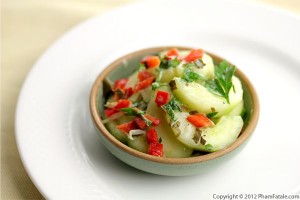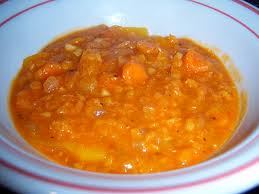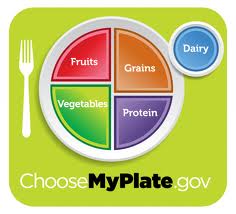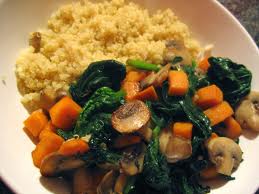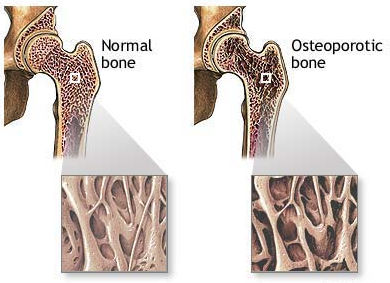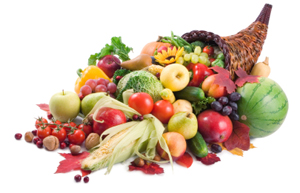Oregano oil to the rescue!
Oregano has been used all the way back in ancient Grecian times as a highly effective medicinal herb. The Greeks used it for wounds, insect bites, snakebites, digestive and respiratory infections–and for good reason–oregano oil is the ultimate natural antibiotic, antiviral, and antifungal!
Oregano essential oil has been proven scientifically to kill bacteria, viruses, fungal infections, and parasites, including giardia, an amoebic infection. Oregano oil has actually been scientifically proven to be effective against even antibiotic-resistant pathogens.
Oregano oil is also incredibly effective against food poisoning, stomach flu, candida infections, ringworm, eczema, sinus infections, nail fungus, acne, skin infections, insect bites, warts, allergies, and more. However, oregano oil is very strong and can be irritating, so it must be diluted in a carrier oil when using on the skin.
When taken internally, it is best to purchase and take as a prepared capsule, so you get the proper strength and dosage.
The active ingredients in oregano oil include phenols, carvacrol (60-80%) and thymol (5%) which provide its antiseptic, anti-fungal, anti-viral and antioxidant components. Other ingredients include terpenes, pinene and terinene which contribute to the antiseptic, anti-viral, anti-inflammatory and anesthetic properties.
All in all, over 800 studies have been conducted on oregano oil and its amazing healing abilities.
Carvacrol is scientifically proven to be highly effective in killing off dangerous staphylococcus, norovirus, E.coli, listeria, campylobacter, and salmonella—all organisms that can cause violent food poisoning. Even better than an antibiotic (which only kills of bacteria), carvacrol is a highly effective antiviral as well. Carvacrol is also an anti-inflammatory aid, and can be used to calm down redness and swelling due to injuries or allergic reactions and insect bites. Studies show carvacrol works against candida overgrowth in the mouth or digestive tract, helps kill cancer cells, and even helps to lower blood sugar.
Oregano essential oil is one of the most potent, versatile natural medicines. Keep it on hand at all times, and you are sure to enjoy its powerful and effective healing properties.
Oregano Oil Benefits for Infections, Fungus, Common Cold
Oregano oil has proven to be a powerful, plant-derived essential oil that may rival antibiotics when it comes to treating or preventing various infections. In fact, it contains properties that are antibacterial, antiviral and antifungal.
In addition, oregano essential oil is unlikely to cause many of the harmful side effects that are commonly attributed to high use of antibiotics — such as increased risk for antibiotic resistance, poor gut health due to destroying beneficial probiotic bacteria, reduced vitamin absorption and leaky gut syndrome due to damage of the gastrointestinal tract’s lining.
Meanwhile, oregano oil benefits extend beyond just controlling infections. What else is oregano essential oil used to treat?
Common examples of conditions that oregano oil can help manage include:
- Athlete’s foot or toenail fungus
- Common colds
- Gingivitis
- Earaches or toothaches
- Digestive problems, such as heartburn and small intestine bacterial overgrowth (SIBO)
What Is Oregano Oil?
Oregano (Origanum vulgare) is an herb that is a member of the mint family (Labiatae). It has been considered a precious plant commodity for over 2,500 years in folk medicines that originated across the globe.
It has a very long use in traditional medicine for treating colds, indigestion and upset stomachs.
Found in the Mediterranean, throughout many parts of Europe, and in South and Central Asia, medicinal grade oregano is distilled to extract the essential oil from the herb, which is where a high concentration of the herb’s active constituents are found. It takes over 1,000 pounds of wild oregano to produce just one pound of oregano essential oil, in fact.
The oil’s active ingredients are preserved in alcohol and used in essential oil form both topically (on the skin) and internally.
When made into a medicinal supplement or essential oil, oregano is often called “oil of oregano.” As mentioned above, oregano oil is a considered a natural alternative to prescription antibiotics.
Oil of oregano contains two powerful compounds called carvacrol and thymol, both of which have been shown in studies to have strong antibacterial and antifungal properties.
Oregano’s oil is primarily made of carvacrol, while studies show that the plant’s leaves contain a variety of antioxidant compounds, such as phenols, triterpenes, rosmarinic acid, ursolic acid and oleanolic acid.
Oregano Oil Benefits
The predominant healing compound found in oregano oil, carvacrol, has widespread uses ranging from treating allergies to protecting the skin.
The Faculty of Pharmacy at the University of Messina in Italy reports that:
Carvacrol, a monoterpenic phenol, has emerged for its wide spectrum activity extended to food spoilage or pathogenic fungi, yeast and bacteria as well as human, animal and plant pathogenic microorganisms including drug-resistant and biofilm forming microorganisms.
Carcavol found in oregano essential oil is so potent that it has been been the focus of over 800 studies referenced in PubMed, the world’s No. 1 database for scientific evidence-based literature. To give you a sense of how multi-functional and impressive carvacrol is, it has been shown in studies to help reverse or reduce some of these common health problems:
- Bacterial infections, Indigestion, Candida, Tumors, Allergies, Inflammation
- Fungal infections, Parasites, Viruses
Here’s a look at the top health benefits of oregano oil:
1. Natural Alternative to Antibiotics
Broad-spectrum antibiotics can be dangerous because they don’t only kill bacteria that are responsible for infections, but they also kill good bacteria that we need for optimal health.
Overuse of antibiotics, and prescribing broad-spectrum drugs when they aren’t needed, can cause a range of problems. It can make the drugs less effective against the bacteria they are intended to treat by fostering the growth of antibiotic-resistant infections, and it can wipe out the body’s good bacteria (flora) which help digest food, produce vitamins and protect from infections, among other functions.
Unfortunately, broad-spectrum antibiotics are very commonly prescribed, often for conditions in which they have no use, such as viral infections. In one study published in the Journal of Antimicrobial Chemotherapy, researchers from the University of Utah and the Center for Disease Control and Prevention found that 60 percent of the time when physicians prescribe antibiotics they choose broad-spectrum types.
Essentially, taking oregano oil is a “broad-spectrum approach” to protecting your health.
Its active ingredients help fight multiple types of harmful pathogens, including bacteria, yeast and fungi. As a study in the Journal of Medicinal Food journal stated in 2013, oregano oils “represent an inexpensive source of natural antibacterial substances that exhibited potential for use in pathogenic systems.”
2. Fights Infections and Bacterial Overgrowth
.Here are some highlights of the ways oregano oil benefits these conditions:
- In 2011, the Journal of Medicinal Food published a study that evaluated the antibacterial activity of oregano oil against five different types of bad bacteria. After evaluating the antibacterial characteristics of oil of oregano, it showed significant antibacterial properties against all five species. The highest activity was observed against E. Coli, which suggests that oregano oil could potentially be routinely used to promote gastrointestinal health and prevent deadly food poisoning.
- A 2013 study published in Journal of the Science of Food and Agriculture” concluded that extracts and essential oil from Portuguese origin are strong candidates to replace synthetic chemicals used by the industry.” Researchers from the study found that after studying the antioxidant and antibacterial properties of oregano, it
- Inhibited the growth of seven tested strains of bacteria that other plant extracts could not.
- One study involving mice that was published in the journal Revista Brasileira de Farmacognosia also found impressive results. In addition to fighting bacteria like listeria and E. coli, researchers also found evidence that oregano oil may have the ability to help fight pathogenic fungi.
- Other evidence shows that oregano oil’s active compounds (such as thymol and carvacrol) can help fight toothaches and earaches caused by bacterial infections. A 2005 study published in the Journal of Infectious Diseases concluded, “Essential oils or their components placed in the ear canal can provide effective treatment of acute otitis media.”
3. Helps Reduce Side Effects From Medications/Drugs
In recent years, many studies have found that one of the most promising oregano oil benefits is helping reduce side effects from medications/drugs. These studies give hope to people who want to find a way to manage the horrible suffering that accompanies drugs and medical interventions, such as chemotherapy or use of drugs for chronic conditions like arthritis.
A study published in the International Journal of Clinical and Experimental Medicine showed that phenols in oil of oregano can help protect against methotrexate toxicity in mice.
Methotrexate (MTX) is a drug commonly used to treat a wide array of issues from cancer to rheumatoid arthritis, but it’s also well-known to have dangerous side effects. After evaluating oil of oregano’s ability to keep these factors at bay, researchers believe it’s due to oregano’s antioxidants and anti-inflammatory properties.
Oregano was shown to work better than drugs that are ineffective at providing full protection against MTX’s adverse effects.
By evaluating various markers in the sciatic nerve in mice, it was observed for the first time that carvacrol decreased the pro-inflammatory response in mice being treated by MTX. Being a relatively new concept in the research world, it’s likely that there will be more studies testing these results because “groundbreaking” doesn’t even begin to describe the significance of this potential oregano health benefit.
Similarly, research conducted in the Netherlands showed that oregano essential oil can also “prevent bacterial overgrowth and colonization in the large intestine during oral iron therapy.” Used to treat iron deficiency anemia, oral iron therapy is known to cause a series of gastrointestinal issues like nausea, diarrhea, constipation, heartburn and vomiting.
It’s believed that carvacrol targets the outer membrane of gram-negative bacteria and increases membrane permeability, thereby causing depletion of harmful bacteria. In addition to its antimicrobial properties, carvacrol also interferences with certain pathways for bacterial iron handling, which helps lower side effects of iron therapy.
4. Helps Treat Athlete’s Foot
One study found that a combination of heat, salt and use of essential oils (including oregano) had inhibitory effects against mycelia of T. rubrum and conidia of T. mentagrophytes, bacterial strains that commonly cause the fungal infection known as athlete’s foot.
The researchers concluded that thermotherapy combined with essential oils and salt would be promising to treat tinea pedis in a foot bath. After testing the fungicidal activity of 11 essential oils against the bacteria known to cause athlete’s foot, oregano oil was found to be the most powerful (followed by thyme, cinnamon bark, lemongrass and clove).
5. Helps Treat Digestive Issues (Including SIBO and Heartburn)
Several of the active compounds found in Origanum vulgare can help aid digestion by relaxing the muscles of the GI tract and also helping balance the ratio of good-to-bad bacteria in the gut.
Thymol, one of oregano’s active compounds, is a similar compound to menthol, which is found in peppermint oil. Like menthol, thymol may help relax the soft tissue of the throat and stomach, which can help to decrease GERD, heartburn and discomfort after eating.
Because it helps balance bacteria and fights yeast overgrowth, oregano essential oil is also a popular natural treatment for candida and SIBO. SIBO is a common digestive problem that causes gas, bloating and intolerances to many carbohydrate-containing foods.
Origanum vulgare hinders bacterial replication and can be used similarly to antibiotic medications, such as rifaximin (Xifaxan), for treating infections that affect digestive health and nutrient absorption.
A 2014 study published in Global Advances in Health & Medicine found evidence that use of herbal antimicrobials is just as effective as the antibiotic usually given for the treatment of SIBO. When 104 patients diagnosed with SIBO (via lactulose breath test) were treated either with rifaximin (1,200 milligrams) or herbal antimicrobials over the course of four weeks, the results showed that 46 percent of the patients treated with herbal antimicrobials experienced symptom improvements compared to only 34 percent treated with the antibiotic rifaximin.
Additionally, 14 of the 44 patients who still had SIBO after a course of rifaximin were then treated with herbal antimicrobials. Fifty-seven percent responded positively to the herbal treatment even after failing to feel better from the antibiotics.
6. Can Help Treat Parasites
One study found that when adults whose stools tested positive for enteric parasites (including Blastocystis hominis, which causes digestive distress) supplemented with 600 milligrams of oregano for six weeks, many experienced significant improvements in gastrointestinal symptoms.
Researchers reported a complete disappearance of Entamoeba hartmanni (four cases), Endolimax nana (one case) and Blastocystis hominis in eight cases. Gastrointestinal symptoms improved in seven of the 11 patients who tested positive for Blastocystis hominis, which tends to cause symptoms like nausea, gas, bloating and abdominal pain.
7. Helpful for Managing Inflammatory Conditions (such as IBD or Rheumatism)
Oregano retains its strong antioxidant capacity in both fresh and dry form. Due to its high concentration of antioxidants, oregano essential oil has been shown to help reduce oxidative damage and help in preventing mutagenesis, carcinogenesis and aging due its free radical scavenging activities.
Free radicals are believed to be a contributing factor to common chronic conditions, including cancer, cardiovascular diseases, neurodegenerative disorders and drug toxicity.
One study found that combined treatment with thyme and oregano essential oils helped reduce the production of pro-inflammatory cytokines and thereby may help attenuate colitis (a type of inflammatory bowel disease) in mice.
8. May Help Improve Cholesterol Levels
Research published in the Journal of International Medical Research suggests that adding oregano oil supplementation can improve cholesterol levels.
For the study, 48 patients with mild hyperlipidemia were given lifestyle and low-fat dietary advice. Thirty-two of the patients (study group) were prescribed 25 milliliters of oregano distillate to be taken after each meal for three months, and the remaining 16 patients were the control group.
After the three-month study period, those in the study group showed significantly greater increases in high-density lipoprotein (HDL) cholesterol and significantly greater decreases in low density lipoprotein (LDL) cholesterol compared to the control group.
How to Use
Oregano oil can be used topically, diffused or taken internally (only if it’s 100 percent therapeutic grade oil). Ideally, you purchase 100 percent pure, unfiltered, Certified USDA Organic oregano oil.
It’s also available as oregano oil soft gels or capsules to take internally.
Before using oregano essential oil on your skin, always mix it with a carrier oil, such as coconut oil or jojoba oil. This helps reduce the risk for irritation and adverse reactions by diluting the oil.
To use it topically, mix three drops of undiluted oregano oil with a small amount of your carrier oil, and then apply topically by rubbing into the skin over the affected area.
Oregano oil uses:
- Natural Antibiotic: Dilute it with a carrier oil, and apply it topically to the soles of your feet or take it internally for 10 days at a time and then cycle off.
- Battle Candida and Fungal Overgrowth: For toenail fungus, you can make a homemade antifungal powder that can be applied to your skin. Combine the ingredients with about 3 drops of oregano oil, stir and then sprinkle the powder onto your feet. For internal use, take 2 to 4 drops twice daily for up to 10 days.
- Fight Pneumonia and Bronchitis: For external infections, apply 2 to 3 diluted drops to the affected area. To prevent internal bacterial overgrowth, ingest 2 to 4 drops twice daily for up to 10 days.
- Fight MRSA and Staph Infection: Add 3 drops of oregano oil to a capsule or to the food or beverage of your choice along with a carrier oil. Take it twice daily for up to 10 days.
- Fight Intestinal Worms and Parasites: Take oregano oil internally for up to 10 days.
- Help Remove Warts: Make sure to dilute it with another oil or mix it with clay.
- Cleanse Mold From the Home: Add 5 to 7 drops to a homemade cleaning solution along with tea tree oil and lavender.
How much oregano essential oil to take internally:
- Your oil of oregano dosage will depend on the condition you’re treating. In capsule form, oral supplementation of emulsified oregano is typically around 600 milligrams daily. (Either taken in one or two doses.)
- A traditional use of oregano leaves is making digestive-aid tea. You can buy pre-made oregano tea or make your own by steeping 15 grams of oregano leaves in 250 milliliters of water for at least five–10 minutes (or longer to make a stronger herbal infusion, up to 24 hours).
- Because oregano oil might interfere with other medications, always ask your doctor if it’s safe to take internally depending on your specific situation.
**If side effects such as nausea, dizziness or an allergic reaction are ever experienced, stop using oregano oil right away, and consider seeing a doctor.
**Use capsules, not the oil, as it is hot and will burn your mouth.
 can’t help but start bobbing your head and tapping your feet. As long as there has been music, there has been dance, and over the years, humans have invented hundreds of different dances. If you love dancing and music but you’ve never really taken the time to learn how to properly cut a rug, then maybe dancing is the
can’t help but start bobbing your head and tapping your feet. As long as there has been music, there has been dance, and over the years, humans have invented hundreds of different dances. If you love dancing and music but you’ve never really taken the time to learn how to properly cut a rug, then maybe dancing is the 


